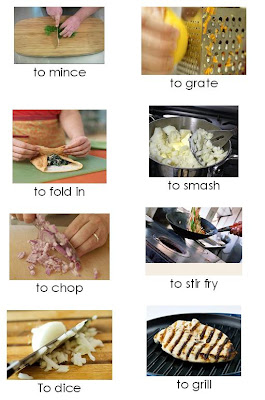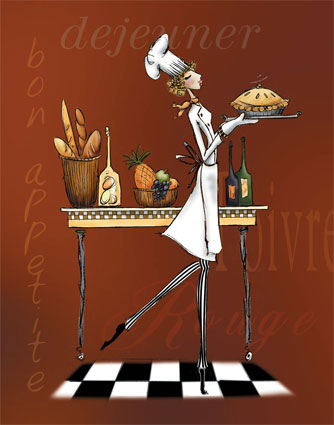
Ingredients:
-4 eggs
Utensils:
A whisk, wooden spoon, fork, electric mixer, or eggbeater, a bowl to mix the crepe batter, plastic spatula, 8 inch non-stick skillet, a tupperware to store leftover batter.
1. Gather your ingredients.
2. Break four eggs into a bowl.
3. Add 1/4 teaspoon of salt to your eggs.
4. Whisk your eggs and salt together until the egg looks uniformly yellow.
5. Measure two cups of flour.
6. Add some of the flour to the egg mixture.
7. Whisk the flour into the eggs. It will be a bit lumpy right now, but that's okay.
8. Whisk some of the milk into the batter. It will get thinner. Keep adding milk and flour alternately until you've added it all.
9. Whisk the batter until it is smooth, like it looks here. It shouldn't take more than a minute or two to whisk it smooth, from the time you started to add the flour.
10. Add the melted butter to the batter, and again whisk it until it's smooth.
11. Cover the batter.
12. Put the batter in the refrigerator.
1. Select an eight inch non-stick skillet. You don't need a fancy crepe pan.
2. Preheat your pan on medium heat. I use about one-fourth of a cup of batter to make a crepe in this size pan.
3. Pour the batter into the pan.
4. As you pour the batter, twirl the pan around.
5. As you twirl the pan, the batter coats it and makes the crepe.
6. As the crepe cooks, it changes in appearance. You can usually see a lace pattern developing on the underside of the crepe.
7. This is what the crepe looks like when it has set. Notice you can see the spatula through the crepe, and this isn't a particularly thin crepe either. The crepe will also usually slide around when it is ready.
8. Slip the spatula under the crepe. Sometimes you need to poke it a bit. If it helps to pick up the edge of the crepe with your fingers, do it.
9. Flip the crepe over. Look at that nice lace pattern on the crepes. If you're skillful, you can flip the crepe with a quick action of the wrist and no spatula.
10. After the second side has cooked for maybe twenty seconds, slip it out of the pan onto a plate for serving.
11. Not all crepes come out in pretty circles. Usually my first one looks awful and falls apart because I didn't let the pan get hot enough. That's okay, sprinkle some sugar on it...
12. ...and feed it to someone you love.












